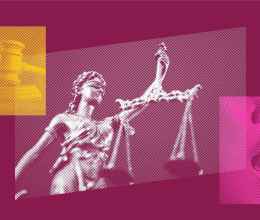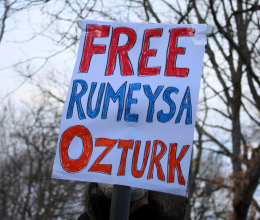
Matthew Segal, legal director for the ACLU of Massachusetts, explained why courts should take into account President Trump's campaign promises when weighing the Muslim ban's true intent. The following piece was published in Just Security.
The ongoing travel ban litigation has triggered intense debate on whether an assessment of the ban’s constitutionality must be limited to the “four corners” of President Trump’s revised Executive Order. This is partly because there is little else to discuss. Given the Trump Administration’s many anti-Muslim statements, it’s hard to imagine how the ban could be upheld by any court that gives serious weight to that evidence. Indeed, the few judges who have suggested that the ban might survive judicial review have largely declined, in the words of Ninth Circuit Judge Jay Bybee, to look “behind the curtain” of the Executive Order itself.
As several commenters have shown, including the ACLU’s David Cole, the strict “four corners” view is wrong. In assessing whether the travel ban is constitutional, courts should not turn a blind eye to its broader anti-Muslim context.
But does the relevant context include everything the Trump Administration has said?
In a brief just filed with the Fourth Circuit, the government argues that campaign statements should carry essentially no weight. Versions of this argument have also been advanced by Ninth Circuit Judge Alex Kozinski and The New Yorker’s Jeffrey Toobin.
Of course, even if only the Executive Order’s four corners are considered, the ban is still unconstitutional. But it’s worth asking whether a special rule for campaign statements, which might be called “four corners lite,” has merit.
In the government’s view, campaign statements “do not prove anything” about the motives of President Trump’s actions in office. Judge Kozinski has warned that if campaign statements are deemed to be evidence in court, politicians’ free speech in electoral contests might be chilled. And in Toobin’s telling, courts that consider campaign statements are unfairly “playing gotcha with the President,” because campaign statements can be improvised and informal.
It’s true that campaign statements deserve special consideration. But their special qualities don’t make them less relevant than other presidential statements. If anything, the opposite is true.
First, campaign statements often provide a clear window to the candidate’s true intent. For example, in 2007 the Fifth Circuit affirmed a verdict against a Louisiana district attorney who, shortly after taking office, replaced more than 50 white employees almost exclusively with Black people. Although the DA advanced race-neutral reasons for these decisions, he had pledged during his campaign to make his staff’s “racial composition” more reflective of his Parish’s population. In affirming the jury’s finding that the DA had engaged in unlawful discrimination, the Fifth Circuit noted that his actions were connected to this discriminatory “campaign promise.”
The travel ban’s connection to a discriminatory campaign promise is even clearer. President Trump’s Muslim ban proposal wasn’t improvised; it was a formal call “for a total and complete shutdown of Muslims entering the United States until our country’s representatives can figure out what is going on.” That call is still on the Trump campaign website; in fact, it was restored to the site in November 2016 after being briefly taken down. So which is more probative of the President’s true intent: his formal campaign promise, or briefs from lawyers given the unenviable task of laundering the President’s intentions? The answer is obvious.
To continue reading the article, click here.




